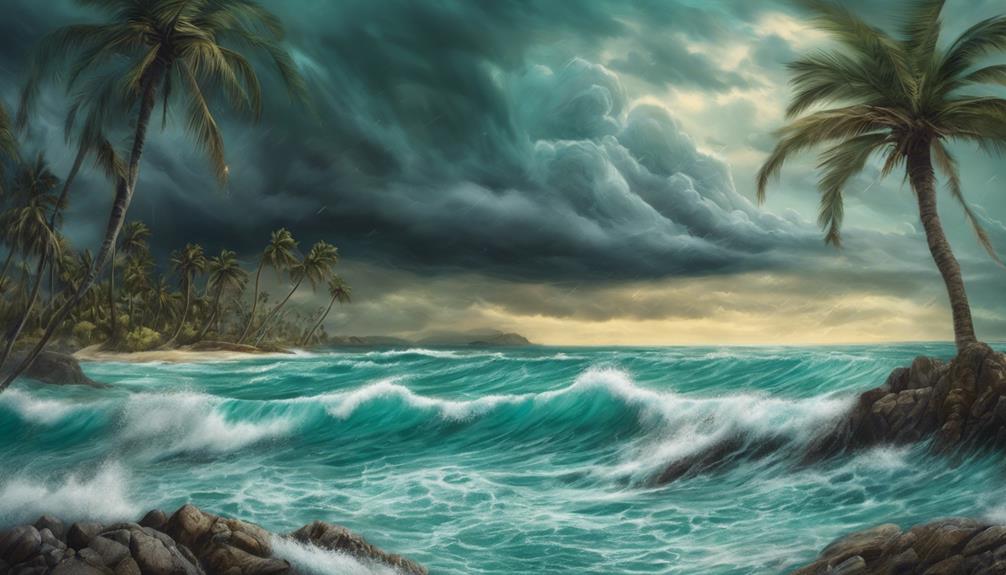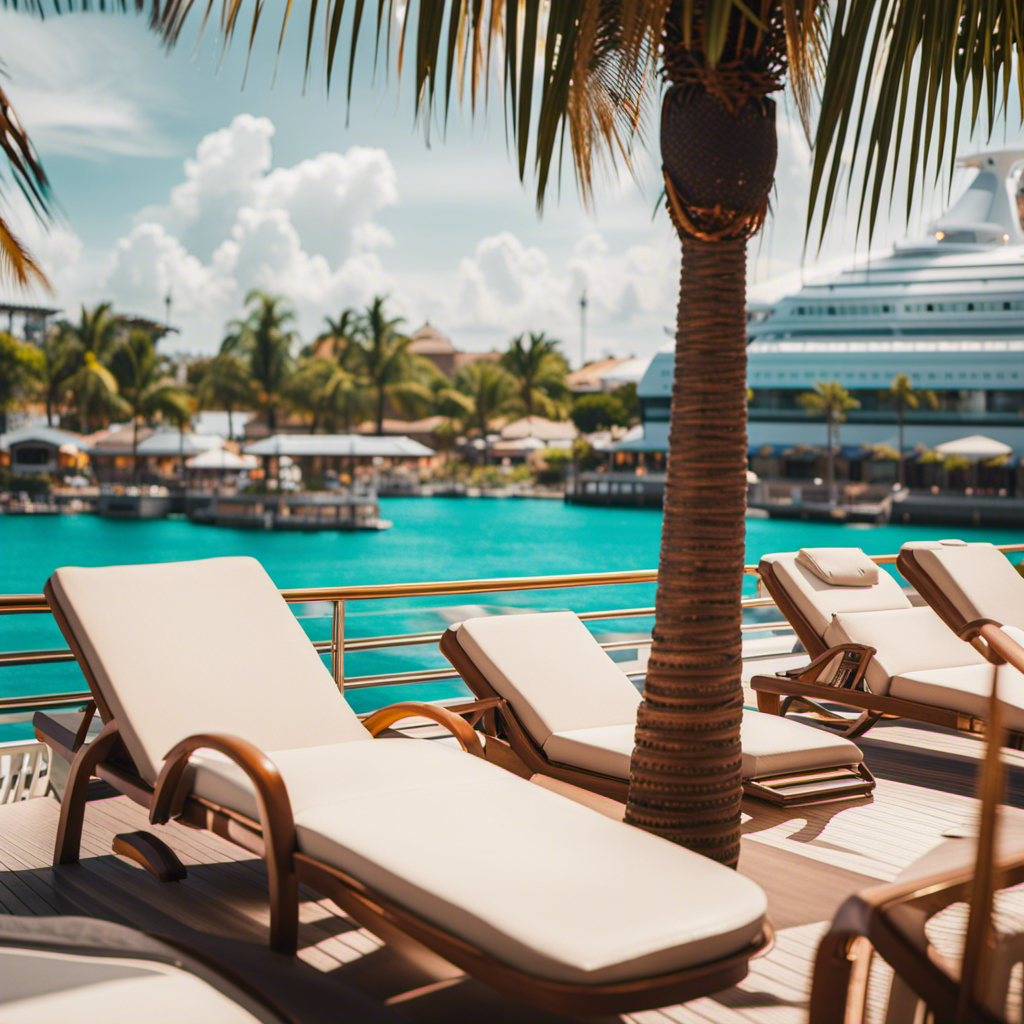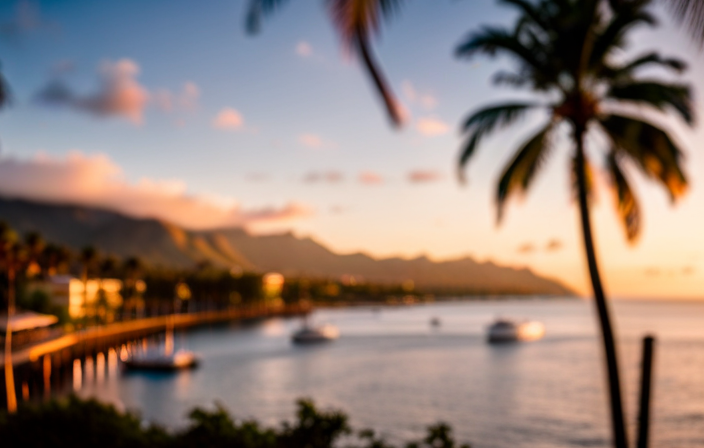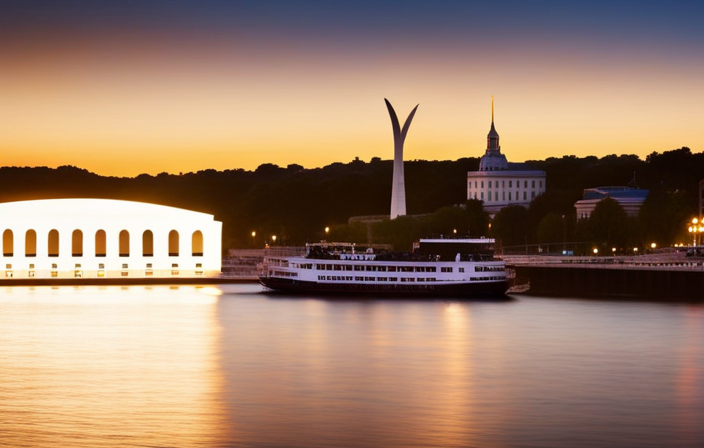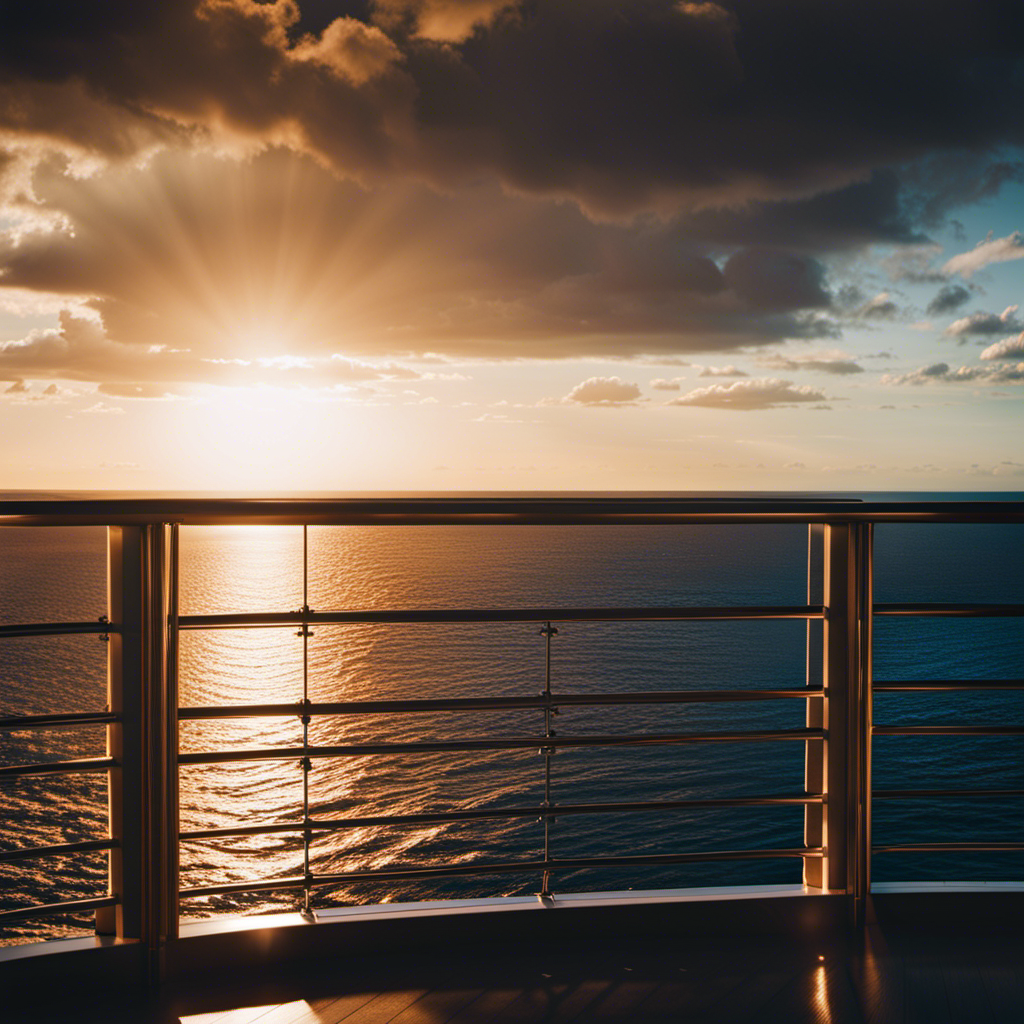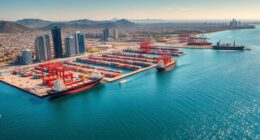As we navigate the treacherous waters of Pacific hurricanes, Mexico's West Coast stands as a ship facing relentless storms.
The looming threats of coastal erosion, infrastructure damage, and community displacement paint a vivid picture of the challenges ahead.
While the list of 10 ways these hurricanes jeopardize the region is extensive, the intricacies of each impact hold vital information that could shape the future of this vulnerable coastline.
Key Takeaways
- Coastal erosion and infrastructure damage pose significant threats to Mexico's West Coast during Pacific hurricanes.
- Water contamination and health risks increase, affecting communities along the coast.
- Economic repercussions from tourism and fishing industry losses exacerbate post-hurricane challenges.
- Urgent mitigation and recovery measures are essential to safeguard communities, biodiversity, and livelihoods.
Coastal Erosion and Beach Loss
Coastal erosion and beach loss on Mexico's west coast are significant consequences of Pacific hurricanes, driven by the powerful wave action and storm surges associated with these intense storms. The relentless force of the waves, exacerbated by storm surges, gradually wears away the shoreline areas, leading to beach loss along the coast. This erosion not only impacts the aesthetic appeal of the coastline but also poses a threat to coastal ecosystems and properties. The vulnerability of coastal communities to flooding and property damage increases as the beaches diminish, leaving them exposed to the ravages of the sea.
Understanding the intricate dynamics of coastal erosion caused by Pacific hurricanes is crucial in devising effective mitigation strategies. Implementing measures such as beach nourishment projects, seawalls, and dune restoration can help safeguard vulnerable areas from further degradation. By addressing the root causes of beach loss and erosion, we can better protect the coastal regions of Mexico's west coast from the destructive impacts of these powerful storms.
Infrastructure Damage and Destruction
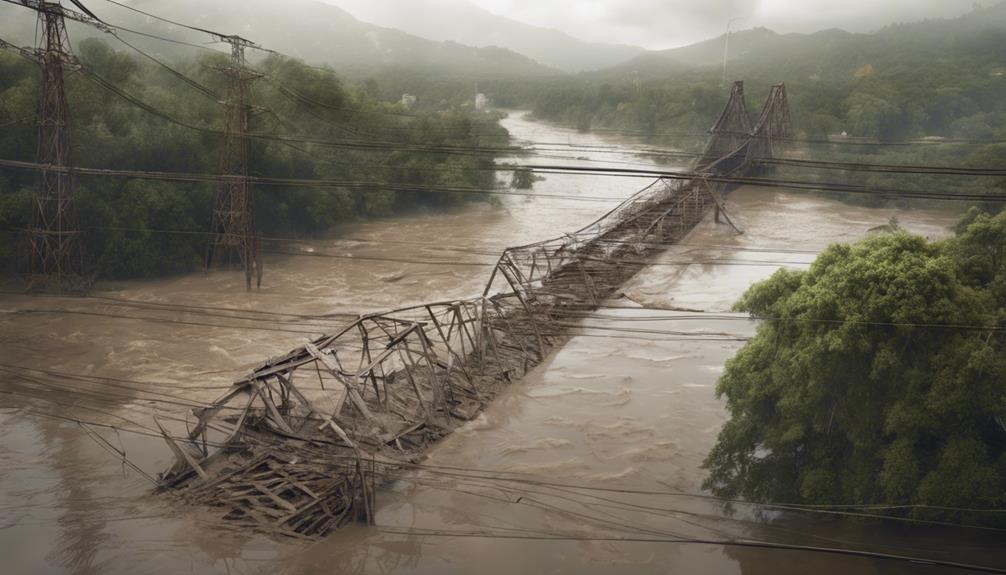
Pacific hurricanes, exemplified by Otis, have wrought havoc on Mexico's infrastructure, especially in Guerrero state. The region has witnessed roads being washed out and buildings collapsing under the ferocious forces of these hurricanes.
The aftermath of these devastating events has left Guerrero's transportation and power systems in disarray, posing significant challenges for recovery efforts.
Road Washouts
Heavy rainfall during Pacific hurricanes poses a significant threat to Mexico's west coast infrastructure through the occurrence of road washouts, leading to widespread damage and destruction. The intense rain triggers landslides and erosion, compromising road stability and causing washouts along the coast. This disrupts transportation networks, hindering access for residents, emergency services, and relief efforts in affected areas.
- Pacific hurricanes bring heavy rainfall, leading to road washouts.
- Landslides and erosion weaken road structures, contributing to the washouts.
- Disrupted transportation networks impede access for essential services and relief efforts.
Building Collapses
The threat of building collapses during Pacific hurricanes on Mexico's West Coast arises from the combined impact of strong winds and heavy rainfall, leading to infrastructure damage and destruction. The intense forces exerted by the strong winds can weaken the structural integrity of buildings, while the heavy rainfall can saturate the ground, further compromising foundations.
Vulnerable structures, particularly those in coastal areas, face a higher risk of collapse during these severe weather events. The aftermath of building collapses extends beyond physical damage, contributing to significant economic losses and displacing residents from their homes.
The risks posed by building collapses during Pacific hurricanes in Mexico highlight the urgent need for resilient building practices and infrastructure maintenance to safeguard lives and enhance the community's ability to withstand such disasters.
Displacement of Communities
Why do hurricanes along Mexico's west coast lead to the displacement of communities?
The severe impact of Pacific hurricanes on Mexico's west coast results in the need for relocation due to storm surges, flooding, and destruction of homes and infrastructure.
Here are three reasons why displacement of coastal communities occurs during these extreme weather events:
- Risk of Storm Surges: Pacific hurricanes bring powerful storm surges that inundate coastal areas, forcing residents to evacuate to safer locations to avoid being swept away by the rising waters.
- Flooding Threat: The heavy rainfall associated with hurricanes leads to widespread flooding, making it unsafe for people to remain in their homes. This necessitates the relocation of residents to temporary shelters or inland areas until the floodwaters recede.
- Evacuation Orders: To ensure the safety of inhabitants, evacuation orders are issued during Pacific hurricanes. These orders aim to prevent casualties and reduce the vulnerability of coastal communities to the devastating impacts of extreme weather events, emphasizing the importance of preparedness and resilience.
Water Contamination and Pollution
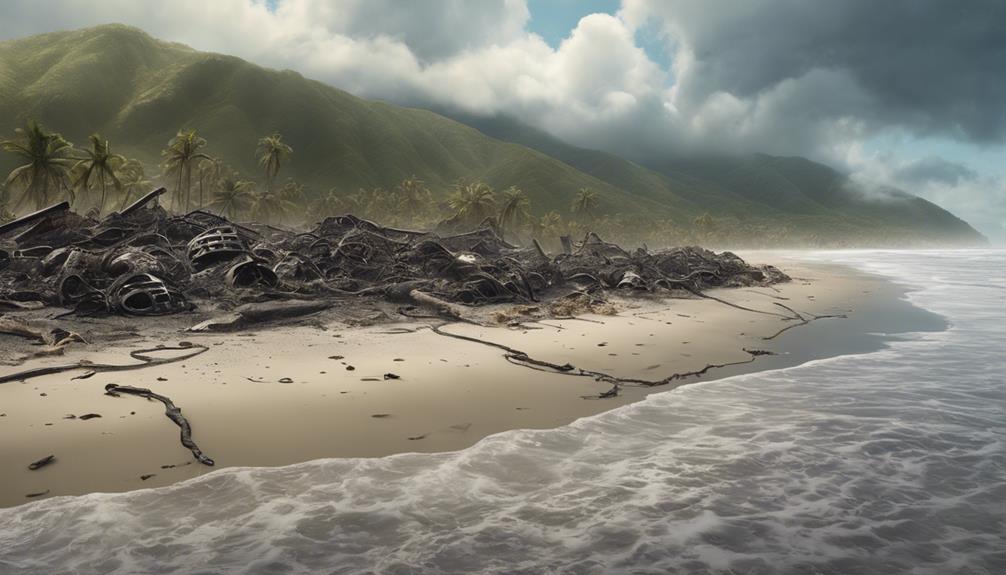
Pacific hurricanes bring about serious concerns regarding water contamination and pollution on Mexico's West Coast. The storm surges carry debris, chemicals, and waste into coastal waters, posing health risks to both humans and marine life.
The aftermath necessitates extensive clean-up and restoration efforts to mitigate the detrimental impact on the ecosystem.
Health Risks From Pollution
Hurricanes along Mexico's West Coast can pose significant health risks due to water contamination and pollution resulting from storm impacts.
Health Risks From Pollution:
- Water contamination post-hurricane can lead to gastrointestinal illnesses, skin infections, and respiratory issues.
- Pollution from storm runoff introduces harmful pathogens, chemicals, and debris into water sources, impacting public health.
- Poor water quality following hurricanes may result in increased cases of waterborne diseases and infections among coastal communities.
These factors, combined with flooding and sewage overflows contaminating drinking water supplies, create serious health threats for residents. Inadequate sanitation practices exacerbate water pollution, raising the risk of disease outbreaks and long-term health consequences.
Impact on Marine Life
The aftermath of Pacific hurricanes striking Mexico's West Coast brings a concerning impact on marine life through water contamination and pollution, causing detrimental effects on ecosystems and species survival. Storm surges and heavy rainfall during these hurricanes wash debris, chemicals, and sewage into coastal waters, threatening marine habitats.
The influx of pollutants harms coral reefs, sea turtles, and marine mammals, disrupting the delicate balance of the ecosystem. The contamination from these natural disasters exacerbates existing water pollution issues along the west coast, leading to environmental degradation.
As a result, the challenges for marine conservation efforts increase, requiring urgent restoration measures to protect biodiversity and ensure the long-term health of the marine environment.
Clean-Up and Restoration
Mitigation of water contamination and pollution following severe weather events like hurricanes requires prompt and systematic restoration efforts to safeguard ecosystems and public health.
In the aftermath of Pacific hurricanes, the focus shifts towards addressing the significant challenges posed by pollution such as sewage overflows, chemical spills, and debris runoff. These issues not only contaminate water sources along the coast but also have detrimental effects on marine ecosystems, coastal habitats, and public health.
To combat these threats effectively, clean-up and restoration efforts post-hurricane revolve around three key actions:
- Managing hazardous waste to prevent further contamination.
- Restoring water quality to support biodiversity.
- Implementing measures to ensure sustainable coastal development and community well-being.
Crop and Agricultural Losses
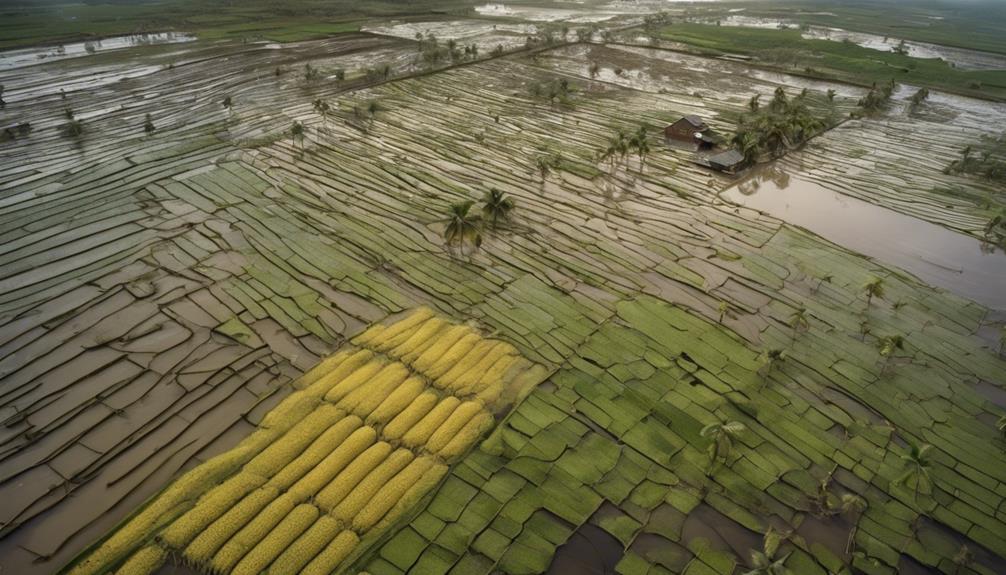
Significantly impacting Mexico's West Coast, Pacific hurricanes pose a severe threat to the region's agricultural sector through the destruction of vital crops and farmlands. The strong winds, heavy rainfall, and flooding associated with these hurricanes result in extensive crop damages, affecting produce such as bananas, coffee, and sugarcane.
These losses not only jeopardize the livelihoods of farmers but also have a profound impact on the local economy. The agricultural sector experiences significant setbacks, leading to decreased food production, shortages of fresh produce, and disruptions in supply chains. Moreover, the destruction of farmlands, irrigation systems, and greenhouses further exacerbates the situation, hindering agricultural activities and contributing to food insecurity in the region.
Post-hurricane recovery efforts are essential and involve replanting crops, repairing infrastructure, and implementing preventive measures to mitigate future losses. The road to restoration necessitates a comprehensive approach to address the challenges faced by the agricultural industry on Mexico's West Coast.
Threat to Biodiversity and Ecosystems

Threatening Mexico's west coast, Pacific hurricanes pose a significant risk to biodiversity and ecosystems through habitat destruction and loss of critical species. Ecosystems along Mexico's west coast face various challenges due to the impact of hurricanes, including saltwater intrusion, erosion, and disruption of natural processes. The vulnerability of biodiversity hotspots such as mangroves, coral reefs, and wetlands to severe storms can have detrimental effects on marine life and coastal resilience.
Key Points:
- Endangered Species Habitat Loss: Hurricanes can lead to the destruction of critical habitats for endangered species, disrupting the delicate balance of ecosystems.
- Ecosystem Resilience: The damage caused by hurricanes highlights the importance of enhancing ecosystem resilience to withstand future extreme weather events.
- Climate Adaptation Strategies: The threat of hurricanes emphasizes the urgent need for conservation efforts, resilient infrastructure, and climate adaptation strategies in coastal regions to protect biodiversity and maintain healthy ecosystems.
Economic Impact and Loss of Livelihoods
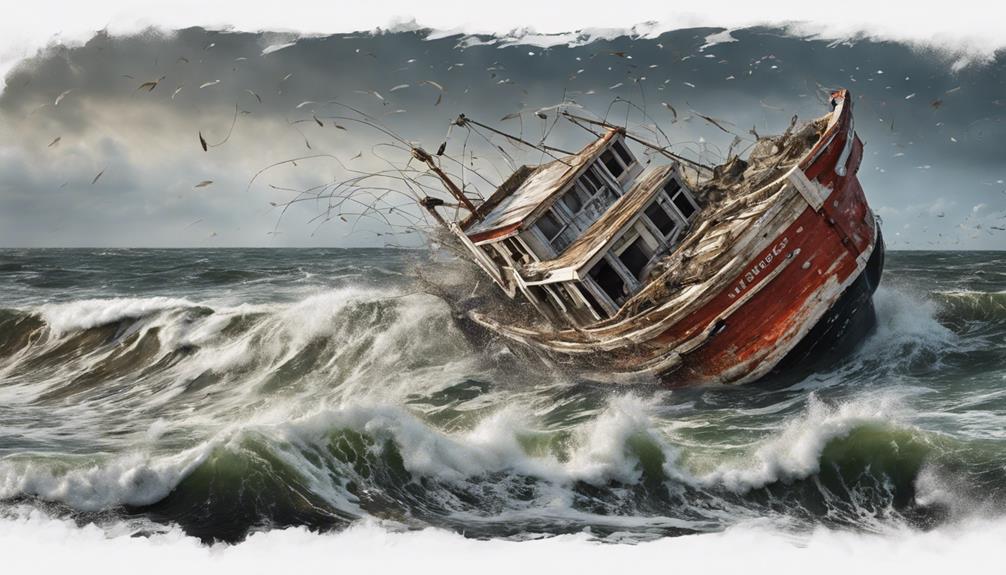
The impact of Pacific hurricanes on Mexico's west coast extends beyond physical destruction, deeply affecting the region's economy and livelihoods. The storm's wrath results in severe infrastructure damage, disrupting key sectors like tourism and the fishing industry. The economic impact reverberates through coastal communities, where businesses struggle to recover, and livelihoods are jeopardized.
The tourism sector, a vital source of income for many in the region, takes a significant hit as hurricanes damage resorts, beaches, and transportation networks. The fishing industry, another cornerstone of the west coast's economy, faces setbacks with boats destroyed and fishing grounds disturbed, leading to long-term implications for those reliant on this trade.
Recovery efforts post-storm focus on restoring the economic stability of these communities and reviving livelihood opportunities. Rebuilding infrastructure, supporting local businesses, and providing financial aid are crucial steps in mitigating the economic fallout. The resilience of coastal communities is tested as they work to bounce back from the devastating economic consequences of Pacific hurricanes.
Increased Risk of Landslides and Mudslides
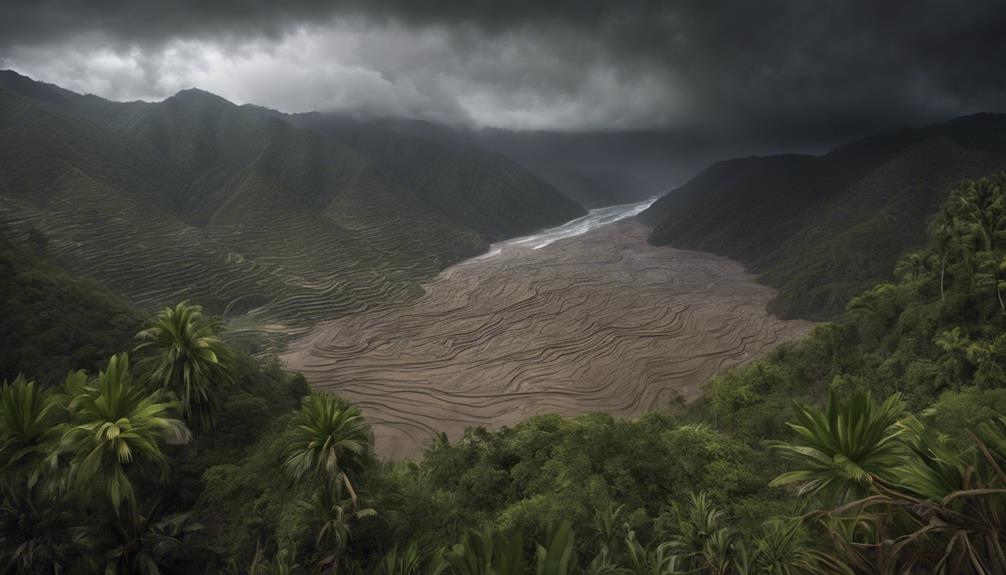
Increased risk of landslides and mudslides during Pacific hurricanes on Mexico's West Coast stems from the combination of heavy rainfall, saturated soil, steep terrain, and deforestation in coastal areas. This convergence of factors creates a hazardous environment where landslides and mudslides become imminent threats to the region.
The following factors contribute to the increased risk:
- Heavy Rainfall: Pacific hurricanes bring intense precipitation, saturating the soil and increasing its likelihood to give way under the force of gravity.
- Steep Terrain: The rugged landscape of Mexico's West Coast, characterized by steep slopes and cliffs, provides the perfect conditions for landslides to occur when destabilized by heavy rains.
- Deforestation: Removal of vegetation in coastal areas reduces the natural barriers that help hold soil in place, making these regions more susceptible to landslides and mudslides during extreme weather events like Pacific hurricanes.
Disruption of Transportation and Communication
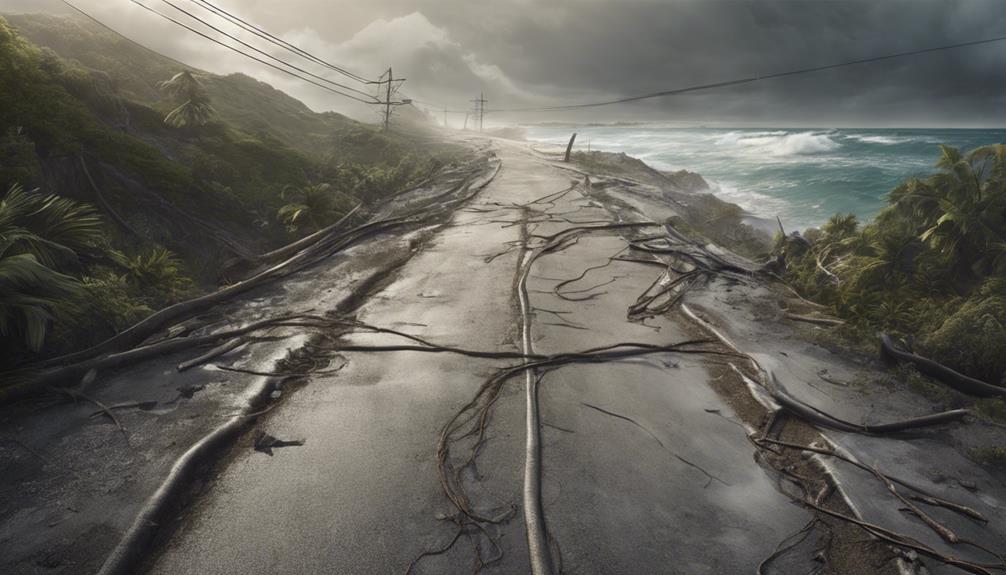
Pacific hurricanes present significant challenges to transportation and communication systems on Mexico's West Coast. The damage caused to roads, bridges, and highways can impede the flow of goods and people, disrupting essential services.
Additionally, disruptions to communication networks can hamper emergency response efforts, exacerbating the impact of these natural disasters.
Infrastructure Damage Impact
Severely disrupting transportation and communication networks, Pacific hurricanes like Otis pose significant challenges for Mexico's Guerrero state, resulting in infrastructure damage that hampers essential services and emergency response efforts. The impact of these hurricanes includes:
- Road Damage and Landslides: High winds and heavy rainfall lead to road destruction and landslides, blocking major highways and impeding transportation flow.
- Communication Network Breakdown: The severe weather conditions cause disruptions in communication networks, limiting access to emergency information and crucial services for residents.
- Power Outages: More than 500,000 customers experience power outages during these hurricanes, leading to widespread electricity disruptions that affect infrastructure functionality and daily life in Guerrero state.
The repair efforts required to address this infrastructure damage are extensive and essential for restoring normalcy in the region.
Emergency Response Challenges
The challenges presented by disruptions to transportation and communication networks during Pacific hurricanes on Mexico's west coast significantly impact the effectiveness of emergency response efforts. Damage to roads and bridges can impede the swift deployment of rescue teams and supplies to affected areas.
Power outages resulting from severe storms pose challenges for coordinating emergency services and providing essential support to impacted communities. Communication breakdowns, stemming from infrastructure damage, can delay the dissemination of critical information and coordination of disaster response activities.
Post-hurricane, the restoration of transportation and communication systems is crucial for efficient recovery operations and access to remote or isolated areas along Mexico's west coast. Overcoming these obstacles is vital to ensuring effective emergency response in the face of natural disasters.
Public Health Risks and Disease Outbreaks
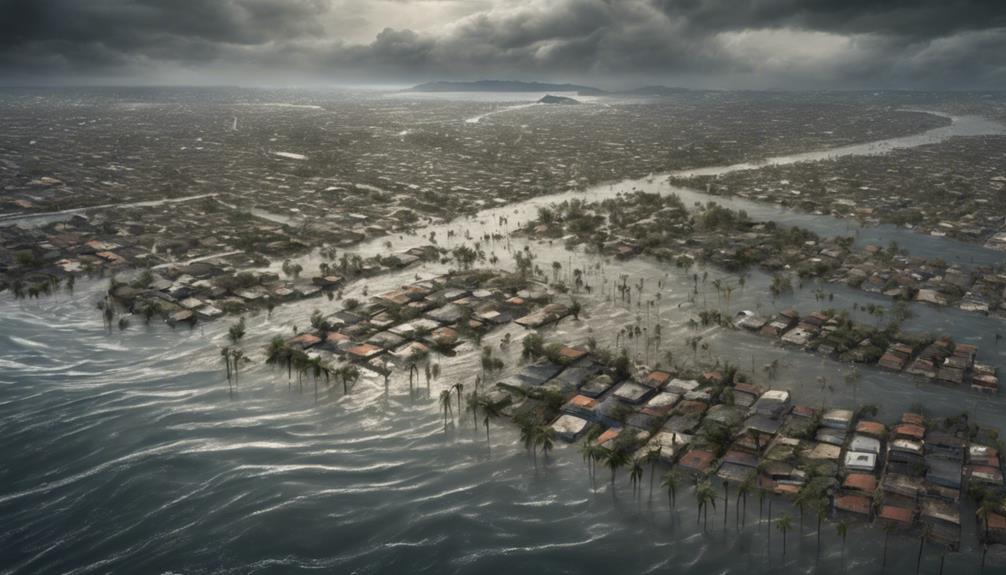
Hurricanes impacting Mexico's west coast can pose significant public health risks, including the potential for disease outbreaks due to contaminated water sources and overcrowded living conditions.
Public Health Risks and Disease Outbreaks:
- Contaminated Water Sources: When hurricanes hit, flooding can contaminate water sources, leading to an increased risk of waterborne diseases like cholera and leptospirosis.
- Infectious Diseases: Floodwaters create breeding grounds for mosquitoes, increasing the spread of infectious diseases such as dengue fever, Zika virus, and hepatitis A due to poor sanitation practices post-disaster.
- Overcrowded Living Conditions: Displacement of populations during hurricanes results in overcrowded shelters, heightening the potential for respiratory infections, flu outbreaks, and other communicable diseases to thrive in close quarters.
These issues are compounded by damage to healthcare infrastructure, hindering medical access, and the exposure to hazardous materials during cleanup efforts, further jeopardizing the health and well-being of communities along Mexico's west coast.
Frequently Asked Questions
Do Hurricanes Hit the West Coast of Mexico?
Yes, hurricanes hit the west coast of Mexico. These natural disasters strike annually during the hurricane season. Devastating storms like Otis and Patricia have made landfall, causing significant damage. Communities prepare with emergency shelters and evacuation plans.
What Is a Hurricane That Occurs in the Western Pacific?
In the Western Pacific, hurricanes are called typhoons. These cyclonic storms can be extremely powerful, affecting countries like the Philippines, Japan, Taiwan, and China. With intense winds, storm surges, and heavy rain, typhoons pose serious risks to coastal regions.
Do Hurricanes Affect the West Coast?
Hurricanes do affect the West Coast. Their impact includes flooding, landslides, and infrastructure damage. Preparedness is vital. Residents and authorities must collaborate to minimize the consequences of these natural disasters, ensuring safety and protection.
How Do Hurricanes Affect Mexico?
Hurricanes affect Mexico by causing flooding, landslides, power outages, and infrastructure damage. With climate change, hurricanes might intensify due to warmer sea temperatures. Preparedness, evacuation plans, and disaster response are crucial.
Conclusion
In conclusion, the threats posed by Pacific hurricanes to Mexico's West Coast are multifaceted and severe. From coastal erosion to economic losses, the impact of these storms is far-reaching and devastating.
As we face the growing challenges of climate change and warming oceans, it's imperative that we continue to prioritize preparedness, safety measures, and environmental conservation to protect our communities and ecosystems.
The future holds uncertainties, but with proactive efforts, we can strive towards resilience and adaptation.
Claire, a creative soul with an unquenchable thirst for storytelling, is an integral part of the Voyager Info team. As a dedicated writer, she weaves captivating narratives that transport readers to enchanting cruise destinations and beyond.
Claire’s love affair with writing began at an early age when she discovered the magic of words and their ability to craft worlds and emotions. Her innate curiosity led her to explore various literary genres, but it was travel writing that truly captured her heart. Drawing inspiration from her own globetrotting adventures and encounters with diverse cultures, Claire embarked on a journey to become a travel writer par excellence.

